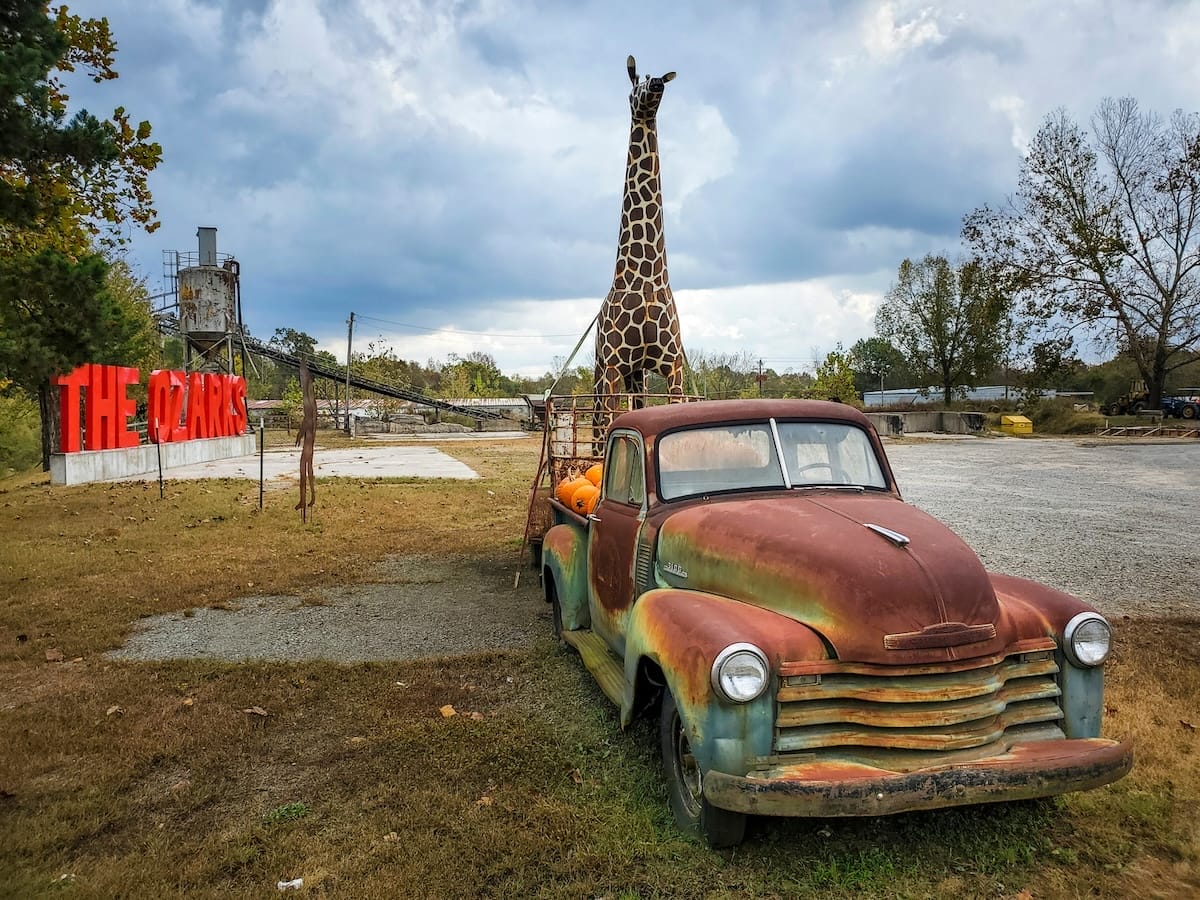

Uh oh...
It appears that you're using a severely outdated version of Safari on Windows. Many features won't work correctly, and functionality can't be guaranteed. Please try viewing this website in Edge, Mozilla, Chrome, or another modern browser. Sorry for any inconvenience this may have caused!
Read More about this safari issue.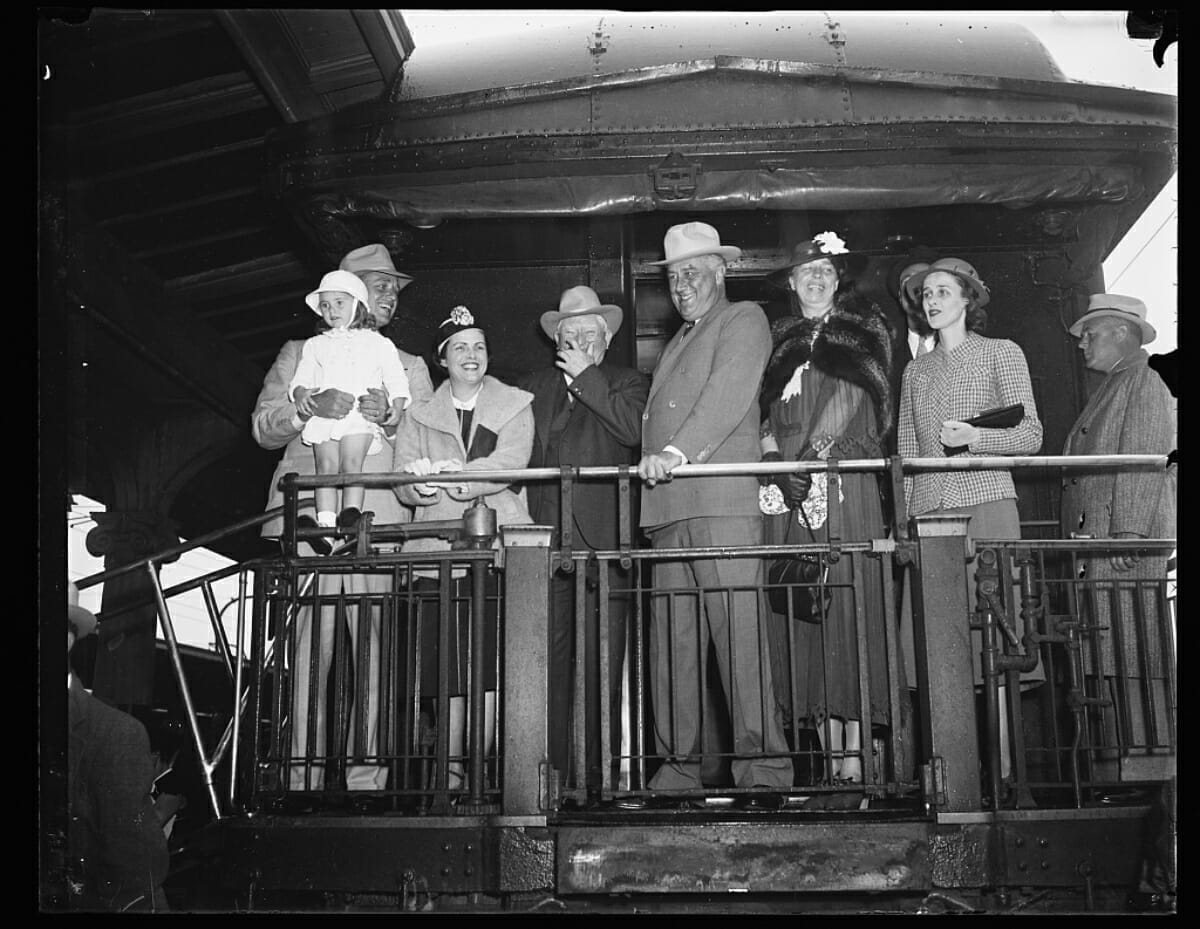

One hundred years after Arkansas became a state, President Franklin D. Roosevelt and First Lady Eleanor Roosevelt traveled through Arkansas to commemorate the event.
My first glimpse of Arkansas was a drive through very rich country just before sun down on my way to the Dyess Colony.” – Eleanor Roosevelt, June 11, 1936, The Eleanor Roosevelt Papers Digital Edition
The Roosevelts had already been in the White House for three years. The President was facing reelection in November. The United States was still battling the Great Depression, but Roosevelt’s New Deal public works policies had improved the lives of many Americans by 1936. The most famous of these public works included the Civilian Conservation Corps, the Public Works Administration, and the National Youth Administration.
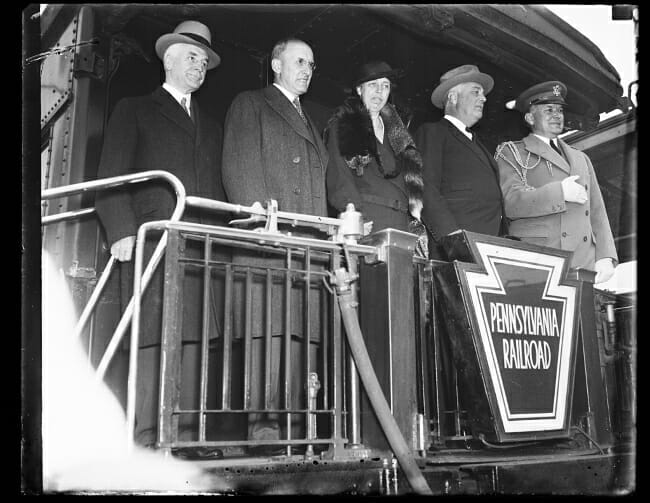
Arkansas suffered greatly during the Great Depression, but the state was struggling before that after the Great Flood of 1927 and a drought in 1930 that ruined many crops and lingered into 1931. Roosevelt’s public works programs and federal money to assist struggling families brought popular support from Arkansas. In 1933, Roosevelt carried every county in the state in the presidential election. The first lady also enjoyed immense popularity.
Eleanor Roosevelt was a fifth cousin (once removed) to Franklin Delano Roosevelt. The pair married in 1905 and had six children. When Franklin became ill in 1921 and paralyzed from the legs down, Eleanor stepped in to represent him in some public speeches and ceremonies. She continued in this role during his presidency, and even held her own press conferences, separate from the presidential ones, held her own radio addresses, and was a strong advocate for women and civil rights.

The Roosevelts arrived in Arkansas by train. Both Franklin and Eleanor used train travel as one of their primary modes of transportation during FDR’s 12 years as president, and President Franklin’s whistle-stop train tours were as famous as his fireside chats. He used both to reach as many people as possible, especially while campaigning. On this particular trip, Eleanor arrived in Arkansas on a tour of some of the WPA projects. She first visited the Dyess Colony, which was created in 1934 and allowed families to move to the colony and farm their own small plots of land with the goal of eventually paying for the land and home. Johnny Cash moved to Dyess Colony with his family in 1935, and the boyhood memories created there were foundational to the singer and songwriter.
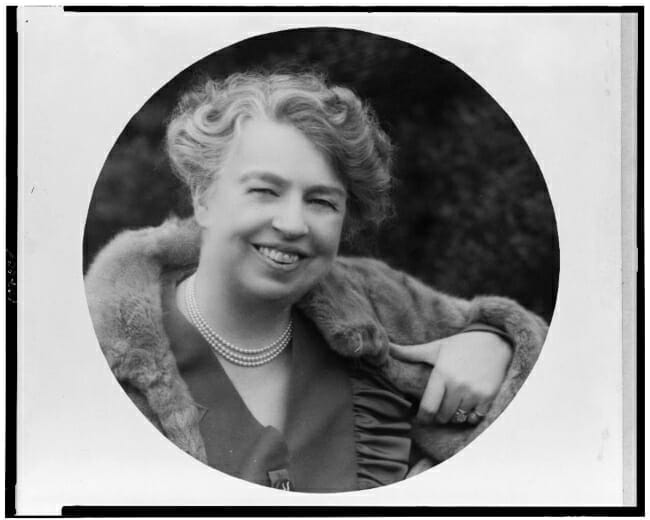
Roosevelt attended a ceremony in Dyess Colony, dedicating the colony in a speech from the steps of its administration building. She kept a public journal entitled “My Day” beginning in 1935 as another way to reach out to her many admirers. She writes, “This is the biggest of all the homesteads that I have seen; four hundred and 80 families actually moved into their homes, and you can almost feel that you are back in the pioneer days for they are clearing their land.” Roosevelt also appreciated the colonists, noting “as I looked into their faces as they came by and at the children who slipped around and in and out, I decided that they had character and courage to make good when an opportunity offered and at last that opportunity seemed to be within their reach.”
Roosevelt returned to her train that night through Arkansas to meet up with her husband and writes that her train car was connected to the president’s train sometime during the night. That morning, the pair arrived in Hot Springs to begin a day of tours and celebrations over the Arkansas Centennial. The Hot Springs High School band led a procession of cars through town with the president, Governor Futrell and state senator Joe Robinson, among others. While the president met with city leaders and toured the town, Eleanor enjoyed breakfast with the governor’s wife, state senator Hattie Caraway, and many others at the Arlington Hotel.
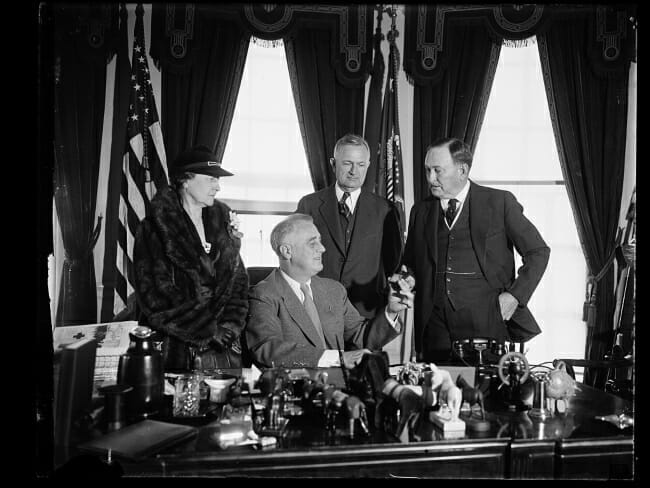
The Roosevelts then visited a bathhouse and had lunch at Lake Catherine before heading to Rockport and Malvern, where they boarded their train and traveled to Little Rock for President Roosevelt’s key address at Centennial Stadium. Local Arkansas papers reported that thousands flocked to Hot Springs and even the smaller towns to see the presidential couple. During the centennial address, Franklin Roosevelt said, “I have seen your parks; I have seen the beauties of your mountains and rivers. Arkansas can claim every warrant for the name ‘Wonder State.’ It is doubly a privilege to meet you face to face and to join with you in the celebration of the One Hundredth Anniversary of the admission of this great state into the Union.”
The next day, the Roosevelts headed to Texas to continue the president’s stumping for reelection. However, this wasn’t the last time the Roosevelts visited the state. During his campaign for his third term as president, Roosevelt visited Booneville on a whistle-stop tour, where he made a short speech from the caboose to thousands of Arkansans gathered at the station. Roosevelt returned in 1943 to inspect Camp Joseph T. Robinson as part of the president’s second wartime tour of army and naval establishments. The president arrived by train and inspected the troops, who had not been told about Roosevelt’s visit. He attended a Palm Sunday service at the camp’s chapel before departing that afternoon. Roosevelt died in 1945, halfway through his fourth term as president.
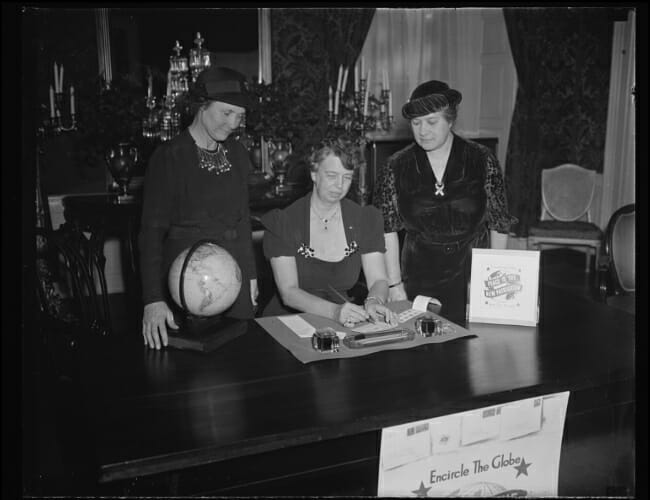
Eleanor Roosevelt returned to Arkansas in 1954 to address students at the University of Arkansas in Fayetteville. By this time, Roosevelt had served as a delegate to the United Nations, where she chaired the Commission on Human Rights from 1946 to 1951. She frequently traveled and spoke as well. On the University of Arkansas campus, she stayed in one of the girls’ dormitories and met with the faculty. She also delivered a speech in the student union. In her “My Day” account written on February 18, 1954, Roosevelt writes, “Even though I had been warned that we were competing with a basketball game, I was told that we had a record attendance.”
Eleanor Roosevelt continued writing her “My Day” column until September 1962. She died on Nov. 7, 1962. The Roosevelts’ visits to Arkansas, while few, were all positive, and the President and First Lady, only had kind words for the state and its people.
To read more of Eleanor Roosevelt’s “My Day” column, visit the Eleanor Roosevelt Papers Project. To learn more about both the President and First Lady, visit the Franklin D. Roosevelt Presidential Library and Museum online.
We do the work.
You check your email.
Sign up for our weekly e-news.
Get stories sent straight to your inbox!


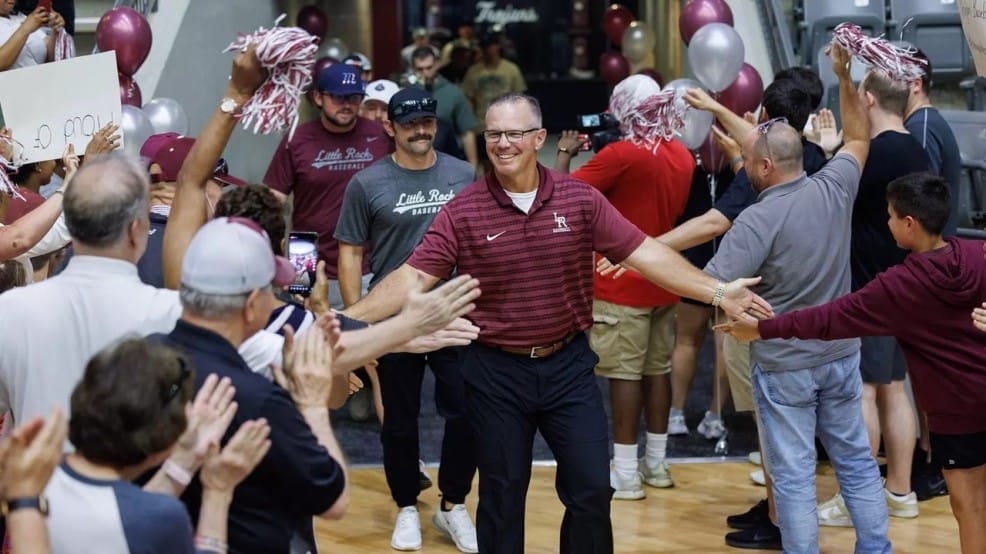





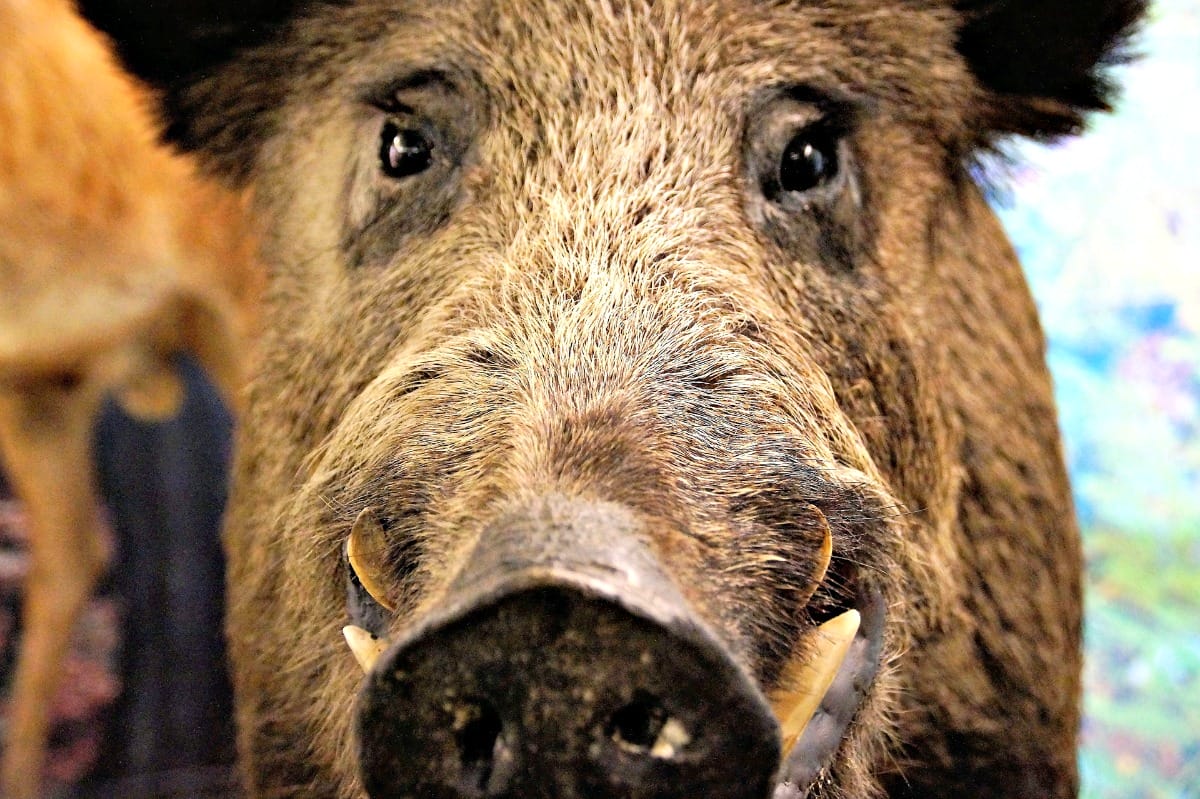



 Leave a Reply
Leave a Reply
[…] the U.S. Girl Guides. Some of these supporters included Louise Carnegie and Susan Ludlow Parish (Eleanor Roosevelt’s godmother). In 1913, Gordon Low changed the name of the group to Girl Scouts to parallel the Boy […]
[…] President Franklin D. Roosevelt and First Lady Eleanor Roosevelt visited Arkansas for the state’s centennial celebration in 1936. The state has seen many more presidential visits through nearly two centuries of […]
[…] in Washington, D.C. The store’s clientele included Presidents Lincoln, Johnson, Jefferson and Roosevelt, plus many more […]